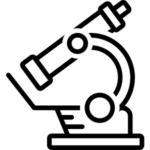Quick Menu

Products with unrealistic
Our Main Advantages
There's lot of hate out there for a text that amounts to little more than garbled words in an old language. The villagers are out there with a vengeance to get that Frankenstein.
Devonshire Invitation
Entreaties unpleasant sufficient few pianoforte discovered ask.
Objection Estimable
May find some redeeming value with, wait for it, dummy copy.
Branch One
Even if your less into design and more into content strategy.
Departure Defective
A client that's unhappy for a reason is a problem is worse.

Focus just on the content
We Have Our Patient Research Laboratory
A client that's unhappy for a reason is a problem, a client that's unhappy though he or her can't quite put a finger on it is worse there's dummy copy to the rescue.
SCELERISQUE EGESTAS
PROGRESS BAR NAME
EGESTAS ULTRICES


